|
Día de Publicación:
|
Enviar a:
|
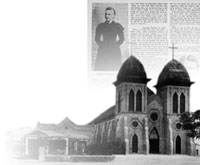
By Leo Cervantes
IN 1693, MORE THAN A DECADE BEFORE THE ENGLISH-SPEAKING
COLONIES FIRST REGULARLY PUBLISHED NEWSPAPER, NEW SPAIN’S EL MERCURIO VOLANTE WAS BEGUN BY CARLOS DE SIGÜENZA Y
GÓNGORA AND CARRIED AN ACCOUNT FOR THE MILITARY
CAMPAIGNS IN NEW MEXICO.
The precursors of the Spanish-language press in the United States are not so much found along the Atlantic seaboard first conquered by English-speaking immigrants as they are found in the areas first colonized by Spain, both in and out of what is now the United States. At least some of this tradition preceded the arrival of the Spanish conquistadores. The native people of the areas had well developed writing, duplicating, record keeping and communication systems. The Aztecs also used different colored paper banners hung near the Gran Teocali in Tenochtitlan to communicate to larger audiences.
The Spaniards brought the first printing press to the Americas in 1535, more than a century before the English-speaking colonists brought their first press. The first press, brought by Fray Juan de Zumárraga, was soon followed by others and by the end of the 16th century it is certain that 174 books were published. Another 60 are without dates or unverified, more than 40 years before the arrival of the first press in the English-speaking colonies.
But New Spain’s presses were put to more than printing books. They were also used to report the news of the day, first in the form of printed leaflets issued when ships arrived in Veracruz and later in newspapers. The first reporting in the Americas was a 1541 printed sheet issued to report an earthquake in Guatemala. Through these leaflets, one Mexican historian has written, the people learned of “the death and coronation of kings, wars in Europe, earthquakes and calamities.” In 1693, more than a decade before the English-speaking colonies first regularly published newspaper, New Spain’s El Mercurio Volante was begun by Carlos de Sigüenza y Góngora and carried an account for the military campaigns in New Mexico. The Mercurio Volante published four volumes in booklet form reporting the events of the period and most likely was the first regularly published news medium in the Americas. Quite a number of publishing efforts followed in the 18th century and the press played an important role in Mexico’s fight for independence from Spain in the years following the opening of hostilities in 1810. Thus, printing and the publishing of news has a long tradition in what is now Mexico, preceding the arrival of the Spanish and, after their arrival, printing and news publishing efforts in the English-speaking colonies.
The connection between journalism in New Spain and Mexico and early Spanish-language newspaper publishing in the United States has not yet been fully explored. But it is apparent that some relations existed. For instance, what apparently was the first Spanish-language newspaper in the United States, El Misisipi, was founded in 1808 in New Orleans, an important seaport connecting the U.S. with Spanish-speaking America. Published from 1808 to 1810 El Misisipi was published in quarto size in Spanish and English. Subsequent Spanish-language publications in Louisiana during the next 20 years often reflected divisions in the Spanish-speaking community as war raged between Spain and her colonies and different forces vied for control of the newly independent nations. In fact, the first issue of what is generally considered Texas’ first newspaper, La Gaceta (1813) was actually printed in Louisiana by a group vying for such power. Other early Louisiana Spanish-language newspapers were started by groups fleeing revolution or changes in government in Latin America and many were bilingual or multilingual. Thus, there were clear lines connecting Spanish-speaking America with the first Spanish-language newspapers in the United States.
Another, more direct, connection was the tradition of printing and publishing in the Northern Mexican territories later invaded and conquered by the United States. These settlements, although on the outer frontier of the Mexican nation, were nevertheless far enough advanced to have printing presses and, in some cases, newspapers. The earliest efforts in Texas have already been mentioned. But the area in which printing and journalism was most active prior to the Yankee takeover was New Mexico.
In New Mexico the first press brought to the territory apparently came from Missouri in the Spring of 1834 and was operated by Ramón Abreu. The press was put to work almost immediately printing a newspaper, El Crepúsculo de la libertad in Santa Fe, which published four issues prior to the election of deputies to the Mexican Congress on October 1, 1834. Other newspapers issued prior to the Yankee conquest include La Verdad in 1844 and 1845 and El Payo de Nuevo Méjico in 1845. A historical controversy surrounds the possible existence of a fourth newspaper, also called El Crepúsculo, which may have been published in Taos by Padre Antonio José Martínez, an activist priest who operated a school and printing press there. Martínez employed Jesús María Baca as a printer and is known to have published a number of small books and pamphlets. He is cited as having published El Crepúsculo, but no copy of the paper has been located and some historians have compiled circumstantial evidence that indicate it did not exist.
Like New Mexico, the press was also active in California prior to the United States takeover, but apparently no newspapers were published. Augustín Zamorano, who operated the first press as a job printing shop after it arrived in Monterey in 1834, stated his printing rates in his first “Aviso al Público” and offered to agree to “more equitable prices with gentlemen who may wish to establish any periodical.” Apparently no potential editors took advantage of Zamorano’s 1834 offer to start a newspaper in Alta California.
______________________________
This article is part of the introduction of the book “Raíces del periodismo hispano” by Leo Cervantes. The book is published in Spanish but with an overview in English. More information at: www.orbispress.com.
Contact the author: leocadioc@netscape.net











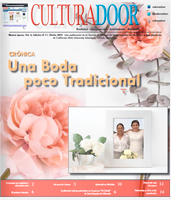
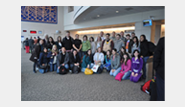

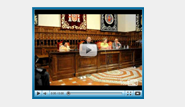


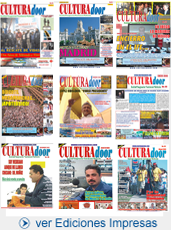







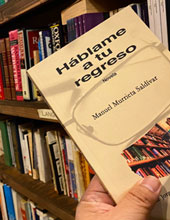
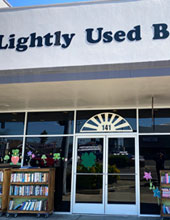
1 Trackback(s)